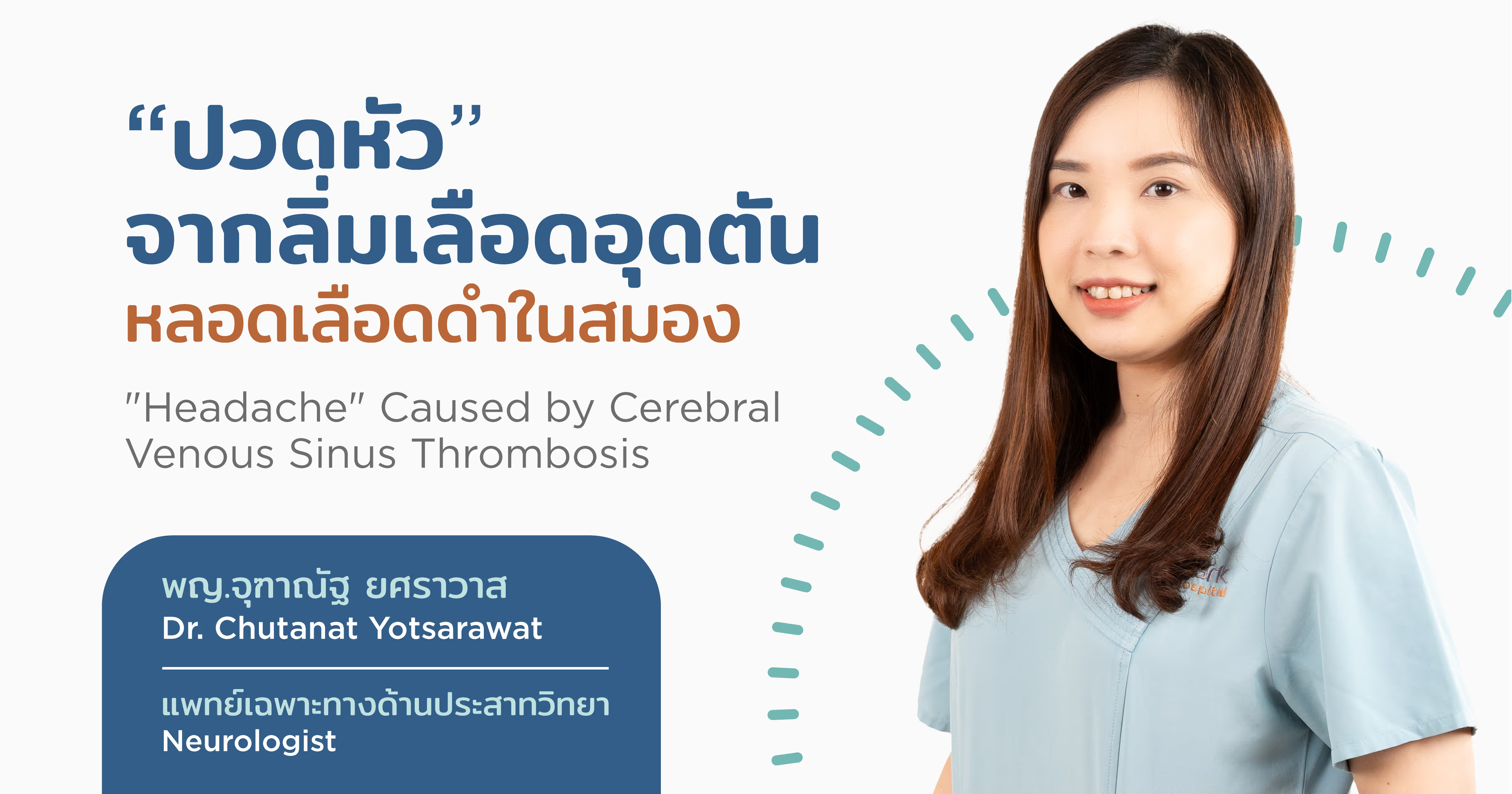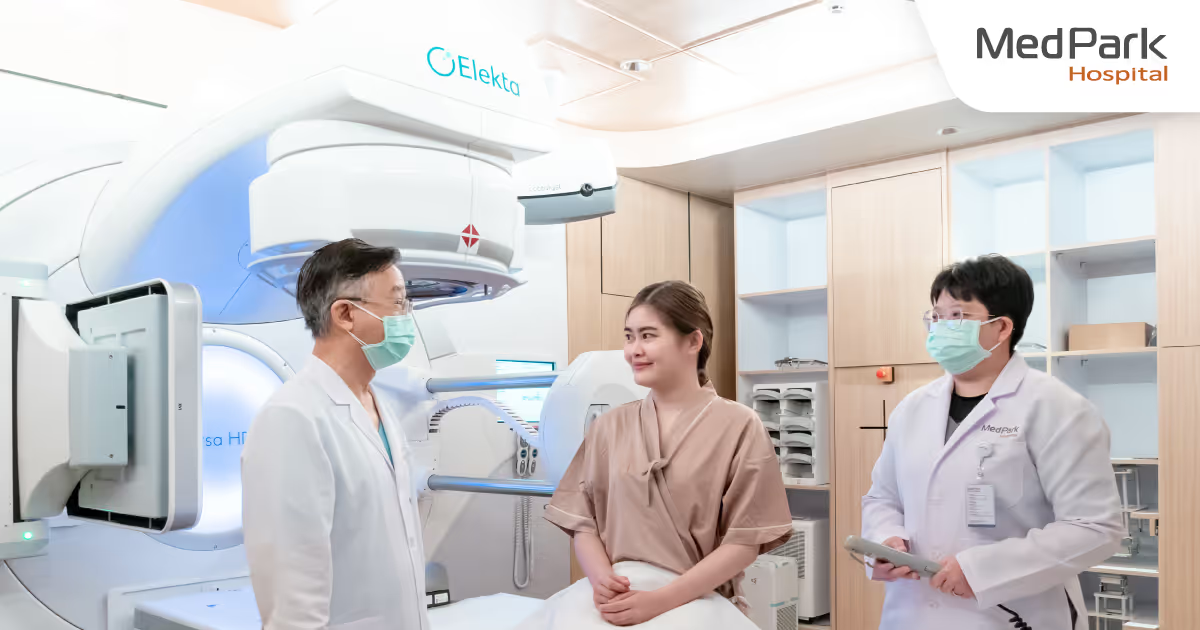โรคและการรักษา

เหงื่อออกมือ สัญญาณบอกโรคอะไร อันตรายไหม
เหงื่อออกมือ อาจดูเหมือนเป็นเรื่องปกติสำหรับบางคน แต่การที่เหงื่อออกมือมากเกินไปอาจส่งผลต่อคุณภาพชีวิตและการเข้าสังคม จนไม่กล้าใช้มือหยิบจับสัมผัสหรือแม้แต่จับมือกับผู้อื่น

โรคหลงตัวเอง หรือ บุคลิกภาพแบบหลงตัวเอง (NPD)
โรคหลงตัวเอง หรือ บุคลิกภาพแบบหลงตัวเอง (NPD) เป็นปัญหาสุขภาพจิตที่พบในผู้ชายมากกว่าผู้หญิง มักแสวงหาความสนใจ ต้องการการยอมรับจากผู้อื่น มักขาดความเห็นอกเห็นใจ

หลอดเลือดดำในจอประสาทตาอุดตัน (RVO)
หลอดเลือดดำในจอประสาทตาอุดตัน (Retinal Vein Occlusion) เป็นภาวะที่ส่งผลให้ตาพร่ามัว สูญเสียการมองเห็นอย่างเฉียบพลันและรุนแรง โดยมักส่งผลกระทบต่อดวงตาข้างเดียว

อาการปวดหัว จากลิ่มเลือดอุดตันหลอดเลือดดำในสมอง
ปวดหัว หรือ ปวดศีรษะ อาการสามัญประจำบ้านที่ไม่ว่าใครก็ต้องมีประสบการณ์ปวดกันมาบ้าง ไม่ว่าจะปวดมากปวดน้อย ปวดข้างเดียว ปวดเข้าเบ้าตา ปวดทั่วใบหน้า สารพัดปวด ซึ่งอาการเหล่านี้มีสาเหตุหลากหลาย

รักษามะเร็งตับ โดยการจี้ความร้อน RFA หรือ MWA ข้อบ่งชี้ ข้อดี
รักษามะเร็งตับ โดยการจี้ความร้อน (Ablation therapy for liver cancer) คือ วิธีรักษามะเร็งตับโดยการใช้เข็มความร้อนจากคลื่นวิทยุ (RFA) หรือคลื่นไมโครเวฟ (MWA) จี้ทำลายก้อนมะเร็งโดยตรงผ่านผิวหนัง

ฉายแสง มะเร็ง รังสีรักษา (Radiotherapy) กี่ครั้ง ขั้นตอน ผลข้างเคียง
ฉายแสง (Radiotherapy) หรือ รังสีรักษา คือ วิธีการรักษามะเร็งด้วยการฉายรังสีพลังงานสูง เช่น รังสีเอกซ์ แกมมา หรืออนุภาคประจุไฟฟ้าไปที่ก้อนมะเร็งเพื่อทำลายสารพันธุกรรม (DNA) ของเซลล์มะเร็งไม่ให้ แบ่งตัว

TMS รักษาไมเกรน หยุดปวดได้ ไม่ต้องกินยา
TMS (Transcranial Magnetic Stimulation) คือการกระตุ้นสมองด้วยคลื่นแม่เหล็กไฟฟ้า หลักฐานทางวิทยาศาสตร์พบว่า ได้ผลดีกับการรักษาไมเกรน หยุดอาการปวด ลดความรุนแรง สามารถป้องกันการเกิดไมเกรน

มะเร็งเต้านม วิวัฒนาการการผ่าตัด แนวทางรักษา ตามระยะของโรค
การรักษามะเร็งเต้านมด้วยการผ่าตัด มีประวัติศาสตร์ยาวนานและเปลี่ยนแปลงไปอย่างมากในช่วง 100 กว่าปีที่ผ่านมา โดยมีเป้าหมายเพื่อเพิ่มคุณภาพชีวิตให้ดีขึ้นและลดผลข้างเคียงที่ผู้ป่วยต้องเผชิญ

มะเร็งเต้านม อาการ การรักษา และปัจจัยเสี่ยงที่ผู้หญิงต้องรู้
มะเร็งเต้านม (Breast Cancer, Carcinoma of the Breast) เป็นมะเร็งที่พบมากที่สุดในบรรดามะเร็งทั้งหมดที่เกิดขึ้นในผู้หญิง จะน่ากังวลแค่ไหนที่ในบรรดาเพื่อนผู้หญิงของคุณทั้งหมด 8 คน จะมี 1 คนที่มีโอกาสเป็นมะเร็งเต้านม